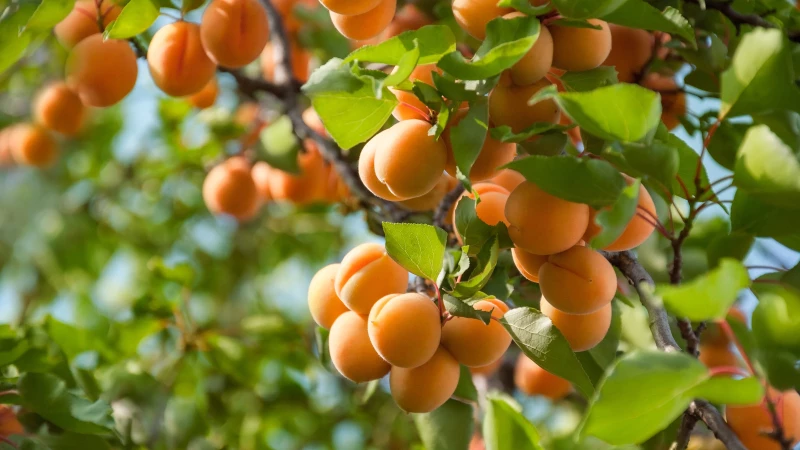Your apricot may need cross-pollination
For those in love with apricots' (Prunus armeniaca) characteristic taste and aroma, the only way to enjoy its juicy sweetness at its pinnacle is to pick the fruit right off the branch as it ripens. In short, you must grow your own apricot tree (or an orchard, for the more obsessed). Regrettably, the fruit tree takes its sweet time — around 4 to 5 years — to reward the grower, assuming spring frosts and cold drafts haven't already damaged the early blooms, a massive concern in cold climates. However, that's not all there is to your fruiting problem. Sometimes, the fault lies with your cultivar — the mistake is not checking if it requires cross-pollination.
Even though apricot trees are touted to be "self-fruiters," meaning they produce their fruit using their pollen without requiring pollination help from their cousin varieties, not all cultivars are so. Perfection, Rival, Goldbar, Goldrich, and Riland are self-unfruitful selections that require additional assistance to bear fruit. Moreover, sharing space with another variety can boost a self-pollinating apricot's yield. So, before you plant apricots, confirm if they'd perform better in a pair.
Factors to Consider in Apricot Tree Pollination

The pollination process in apricot trees involves the transfer of pollen from the male anther to the female pistil within the same tree. This self-sufficient ecosystem allows for the blooming process to occur, either within the same flower or a different one. However, not all cultivars can successfully undergo this process, as confirmed by the research conducted by G. F. McLaren & J. A. Fraser.
For those cultivars that require cross-pollination, it is necessary to have a different variety of apricot tree placed no more than 50 feet away. This ensures that the pollen can transfer to the other tree, known as the pollinizer, and set fruits. In some orchards, between 15% and 25% of the total apricot trees are planted as pollinizers to improve yields.
Pairing two different cultivars for cross-fertilization is an art in itself. The success of cross-fertilization depends on both cultivars blooming simultaneously, even if their ripening times differ. The receptive period for pollen in apricot flowers lasts for 12 to 48 hours, with a shorter window during hot days. If cross-fertilization does not occur within this period, no fruit will be produced. Additionally, the pollinizer variety should be suitable for the same USDA zone to ensure better matching and results. Nurseries can provide more options for viable combinations.
Interestingly, some gardeners choose to fertilize apricots with plums, resulting in hybrid fruits like Plumcot and Aprium.
Apricot Trees and Cross-Pollination
Even self-fruiting apricot varieties like Wilson, Earli-Orange, Goldcot, and Superb can benefit from cross-pollination, leading to dependable crops and better fruits. It may even raise the total yield of the stone fruit trees. So, check the label for details on production-boosting cultivars before laying them out next to your main variety. However, some disagree, saying that rather than cross-fertilization, what these sweet-smelling trees truly need for higher yields is more pollinator action. Plenty of apricot trees are early bloomers — they don't receive enough assistance from nature's favorite pollinators, like birds, honey bees, flies, and butterflies.
The uncomfortable wet and cold temperatures during the spring's arrival probably throw these helpers off. You can bring more pollinators into your yard by planting a few nectar-making companion plants like lilac, lavender, and heather. Removing flowering weeds and placing a bird feeder in your garden should help attract the nectar-suckers, too. In extreme cases, consider introducing around 2.5 bee colonies per hectare to improve cross-fertilization. Finally, avoid using pesticides during the flowering season.








